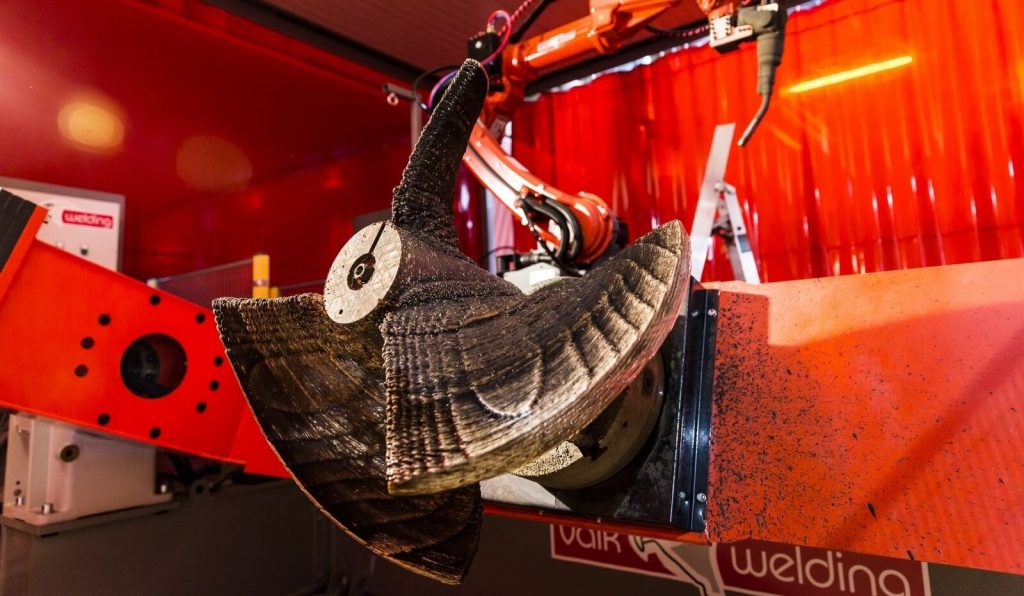The Damen Shipyards Group, headquartered in Gorinchem, Netherlands, has given an update on the progress of its 3D printed tugboat propeller. Nicknamed “WAAMpeller” the project has is been in development since April 2017, and is the product of a venture between the Damen shipbuilders, RAMLAB, Promarin, Autodesk and Bureau Veritas.

Rotterdam’s maritime innovation dock
WAAMpeller production is in progress at the Rotterdam Additive Manufacturing Lab (RAMLAB) whose 3D metal printing facility opened in November 2016 at the RDM Innovation Dock.
The lab is run by the Netherlands’ National Institute for Shipping and Shipbuilding, (NISS) which encourages application of 3D printing in the maritime industry.
Producing and fitting the propeller to scale
The propeller is printed from a Nickel Aluminium Bronze (NAB) alloy using Wire Arc Additive Manufacturing (WAAM) with a Valk welding system. After 3D printing, the propeller is CNC milled to give the desired finish.
Autodesk provides RAMLAB with software to guide both additive and subtractive processes performed using the system’s 6-axis robotic arms.

The finished propeller measures 1.350 meters and weights 400kg, a huge undertaking even for machines that can print up to 7x2x2m. The size, however, has been the least of the project’s difficulties.
“The challenge has been to translate a 3D CAD file on a computer into a physical product,” explains engineer Kees Custers, a project engineer for Damen, “This is made more complex because this propeller is a double-curved, geometric shape with some tricky overhanging sections.”
Propelling to the future
Fabrication of the WAAMpeller is an important step in NISS’s blueprint for fully incorporating additive manufacturing into the maritime construction industry over the next 30 years and beyond. Eventually, the industry hopes to be able to produce a large number of parts on demand and skip some blueprinting stages altogether by using advanced CAD software.
Dr. Wei Ya, a researcher at RAMLAB, notes that “…with additive manufacturing, you can print most metallic components that are needed in principle. There is so much potential for the future – these techniques will have a big impact on the supply chain.”
For more like this, please follow out newsletter, and don’t forget to subscribe to our Facebook and Twitter feeds.


